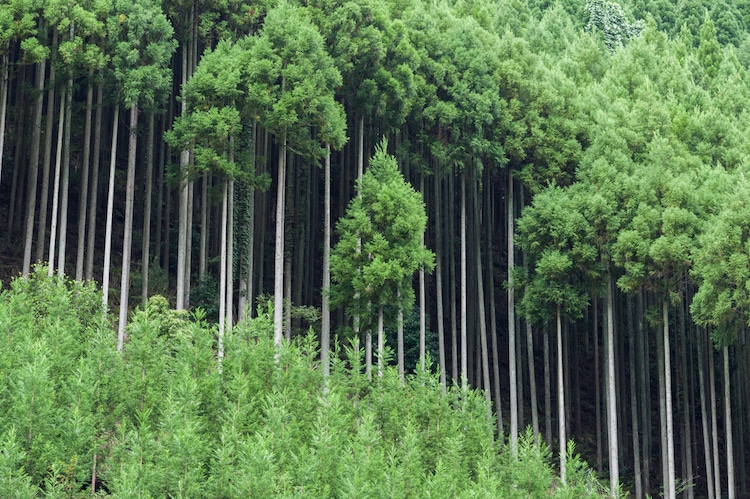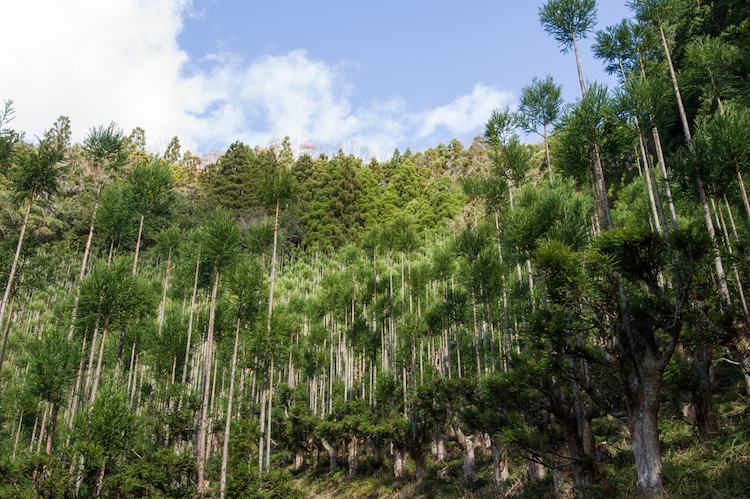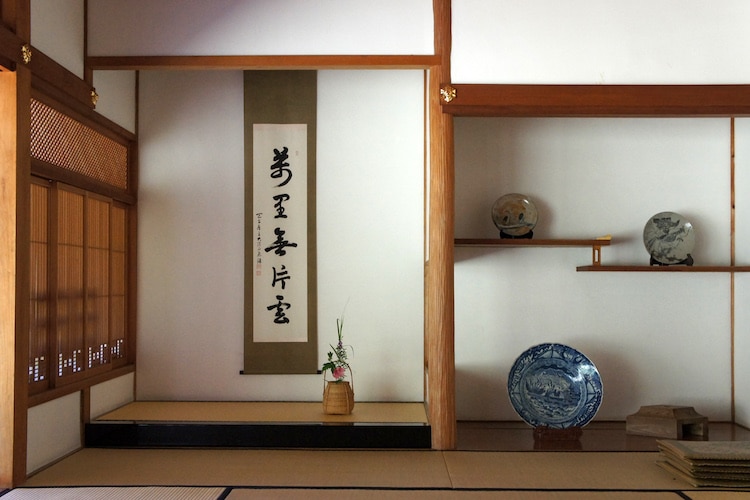
Photo: Wrath of Gnon
Not far outside of Kyoto, there are immense cedar forests planted along the hills. This Kitayama cedar is known for being exceptionally straight and without knots and has been in high demand since the 15th century. With such a demand and lack of space, foresters came up with an ingenious way to grow more wood using less land. This involves the heavy pruning of a mother cedar tree, which encourages tall, thin saplings to shoot upwards. Think of it as a bonsai on a large scale.
This technique, which is called daisugi, enables foresters to harvest wood much more quickly. The shoots can either be planted (to help quickly populate a forest) or harvested. Similar techniques can be found dating back to ancient Rome, which was called pollarding, and across Europe—particularly in Britain—where it's called coppicing. The result is slender cedar that is both flexible and dense, making it the perfect choice for traditional wood roofs and beams. Daisugi cedar can be harvested every 20 years and with the base tree lasting hundreds of years, there's a lot of wood to be harvested from just one tree.
While 20 years may seem like a long time, this is actually accelerated compared to traditional Kitayama cedar. In order to keep the trees knot-free, workers climb the long trunks every three to four years and carefully prune any developing branches. After about 30 years, a single tree is finally cut down. This type of cedar, which is slightly thicker than the daisugi cedar, has several different uses.
Traditionally, the smooth, aesthetically pleasing pieces of wood were used as the main pillars in an alcove called the tokonoma. Also first appearing in the 15th century during the Muromachi period, these alcoves were used to display artistic items like ikebana or scrolls. They also feature prominently in Kyoto's tea houses and it's said that it was Kyoto's preeminent tea master, Sen-no-rikyu, who demanded perfection in the Kitayama cedar during the 16th century.
Though the use of Kitayama cedar in these traditional alcoves is declining as Japanese architecture develops, this highly prized wood is still used for everything from chopsticks to furniture.
Kitayama cedar in Japan is a tall, straight tree that is carefully cultivated so it's without knots.

Photo: Stock Photos from H.Tanaka/Shutterstock
Foresters use a technique developed in the 15th century to help them get even more lumber.

Photo: Stock Photos from H.Tanaka/Shutterstock
Called daisugi, it calls for one tree to be pruned like a bonsai so multiple offshoots can be harvested.

Photo: Open Kyoto
The cedar is particularly important in traditional architecture, where it's often used as posts in alcoves called tokonoma.

Photo: 663highland (CC BY-SA)
h/t: [Japan Times, Earth Buddies]
Related Articles:
700-Year-Old Dying Banyan Tree Is Being Revived With an IV Drip
Designer Grows Trees as Artistic Furniture Straight From the Ground
Bonsai Master Masahiko Kimura Creates Gravity-Defying Mini Forests
391-Year-Old Bonsai Tree Survived Hiroshima Bombings and Keeps Growing






















































































